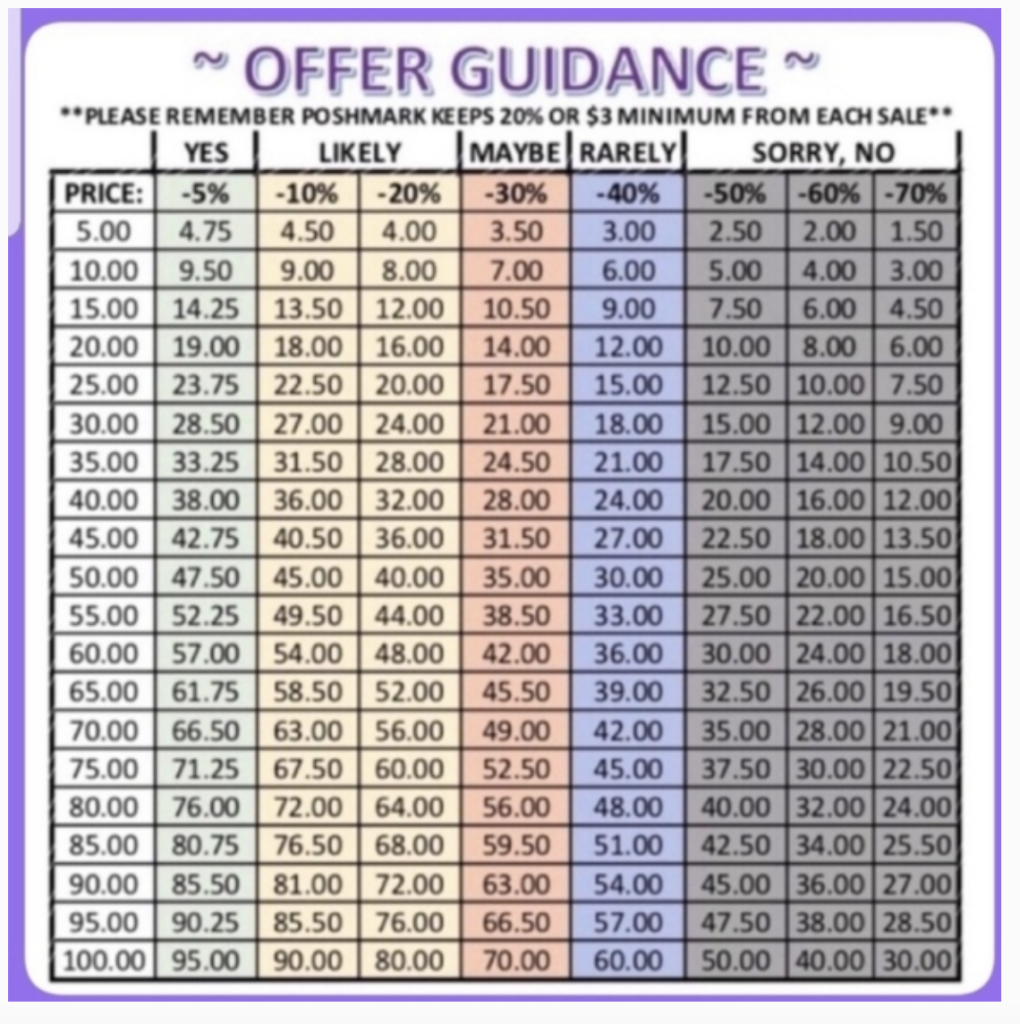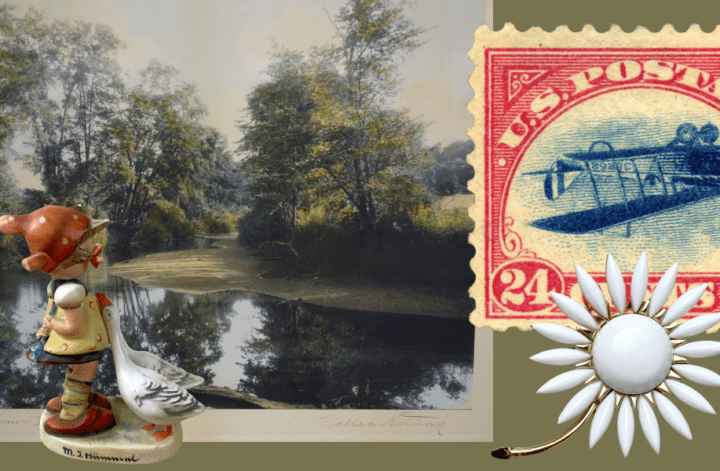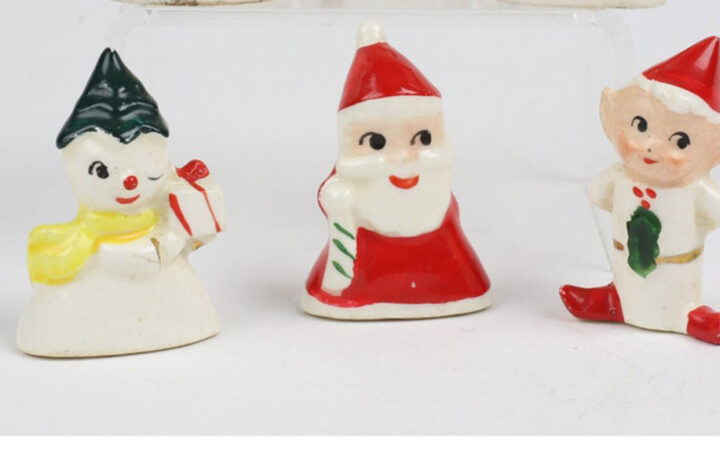Buying from an online vintage seller is a wonderful thing for you and the seller. You’re having a personal transaction with a small business that appreciates you and you’re getting something cool with a history. Online marketplaces like eBay, Etsy, Poshmark, Chairish, Depop and Facebook as well as stand alone vintage sites give buyers the opportunity to go beyond buying and interact with sellers directly. You can ask questions and, if you are so inclined, make offers like you might at a flea market. There are no official rules about making an offer, a buyer can offer anything, but the seller does not have to accept the offer. Since everyone likes a deal, and sellers like to make sales, let’s talk about how to make an offer to an online vintage seller that is a good deal for both of you.

Here are some points to consider when making an offer:
How long has the item been listed?
Requesting a discount on a brand new listing rarely meets with success. A seller is more likely to be open to discounting if an item has been languishing in their shop for longer than they would like.
How much are you purchasing?
If you’re buying volume, you are more likely to get a discount. If you make an offer to an online seller for items that total under $50, they might decline. But if you’re buying multiple items and spending $100, they might be more amenable.
Are you a frequent flyer?
Buyers who purchase regularly from a seller are often are rewarded for their loyalty.
Is it a high demand item?
This ties in with how long has an item been listed. I occasionally list things that attract attention immediately, like holy grail Pyrex or costume jewelry. I might get a few offers, but I generally don’t even have time to reply to them before someone swoops in an buys it for the asking price. If you want a high demand item that has appropriate pricing, don’t lose out by making an offer.
What fees will the seller pay their marketplace?
Marketplace fees aren’t cheap. Chairish charges 22-30% depending on what you are selling. Poshmark has a 20% fee. eBay has a range of fees from 13% to 15%. Etsy transaction fees are 6.5% of both the cost of the item and shipping. Mentally deduct those fees before you make an offer.
Is shipping included in the purchase price?
We all want things delivered to our doorstep, but none of us like paying for that to happen. Ten years ago, when mailboxes were still stuffed with catalogs and free shipping was less common, shipping cost was a budgeting tool. You didn’t want to pay $10 shipping for a $30 sweater so you didn’t order it.
As buyers, we’ve become accustomed to free shipping from large online retailers. That’s one of the reasons we small online sellers feel pressure to offer it too. Add in more pressure from sites like Etsy, which incentivizes offering free shipping by giving better search placement for those items.
The simple fact is, we’re in no position to compete with the online megalodons in the world of free shipping, but because it’s becoming an expectation, we have to at least think about it. Remember that if a seller offers free shipping, it’s not free for them. Postage and packing materials cost money. Those costs have to be factored into the item price, but the item also can’t be priced too high above what other sellers are listing it for, even if those sellers aren’t including shipping. That’s why there isn’t a lot of wiggle room to offer a discount in addition to free shipping.
And here’s the biggest variable to consider when you think about how to make an offer to an online seller…
How big a discount are you asking for?
There is nothing that raises a seller’s hackles more than a lowball offer. A lowball offer puts a seller in a bad mood so fast that murderously gray steam shoots out their ears and nose. I took a spin through various discussion boards about lowball offers, and a multitude of sellers said they block those buyers. That seems a little reactionary, but I will admit it’s crossed my mind to reply to some offers with “ARE YOU KIDDING?” with an expletive in the middle. When it’s a particularly egregious lowball, I’ll flat out decline.
Making a lowball offer is not a good way to start a negotiation. It’s like kicking your neighbor in the shin and then asking to borrow their mower. Chances are pretty good you’re not going to negotiate that around to a yes and you are definitely not going to be invited to the fourth of July barbecue.
Offers of 5-20% are reasonable asks. Anything 40% or over is not.
Poshmark seller bossdjfargo has this chart as one of the listings in their closet, and it is spot on good advice for what to offer if you make an offer.
There is a bigger question than HOW to make an offer to an online vintage seller…and that’s SHOULD you make an offer to an online vintage seller? It’s always been common practice to negotiate at flea markets and yard sales, maybe because transactions are cash or Venmo. It’s less common in brick and mortar vintage and antique shops and way less likely to be successful, but it happens. How and why it’s become common online would take a larger brain than mine to suss out. Maybe we have eBay to thank. It’s encouraged best offers almost as long as it’s been alive.
The vast majority of online vintage sells at asking price. Good sellers have done their research on an item’s retail value, have factored in their time, marketplace fees and other costs, added in some profit and set the price fairly and appropriately. By accepting an offer, they are cutting into their bottom line. It’s not a high margin business, so sellers have to balance staying out of the red with making a discounted sale.
Many vintage sellers don’t love but will consider reasonable offers because a slightly discounted sale is better than no sale. But, if the online forums are to be believed, there are also vintage sellers who absolutely positively won’t even consider discounts. Small online retailers of new goods would be unlikely to accept an offer for their merchandise, and they have multiples of the same item in inventory. Vintage sellers are mostly dealing in one offs, most of us can only dream of having multiple Fenton cake pedestals or original Grateful Dead t-shirts. (Note: if a “vintage store” is selling multiples of something like that, chances are they are not really a “vintage store” and the pieces they are selling are not “vintage.”) For that reason, it’s easy to see why some sellers say no, no and no to discounts.
So what’s the bottom line? Yes, you can make an offer to an online vintage seller. Not every offer will be accepted. But it’s okay to take the opportunity to connect with the seller and ask. I didn’t say this before, but don’t add a heart tugging story with your offer–no one actually believes it. (But please DO message the seller that story after the sale, because then we believe you and we live for those stories.) Hopefully these tips will help you arrive at a fair offer price that will better your chances having an offer accepted.







